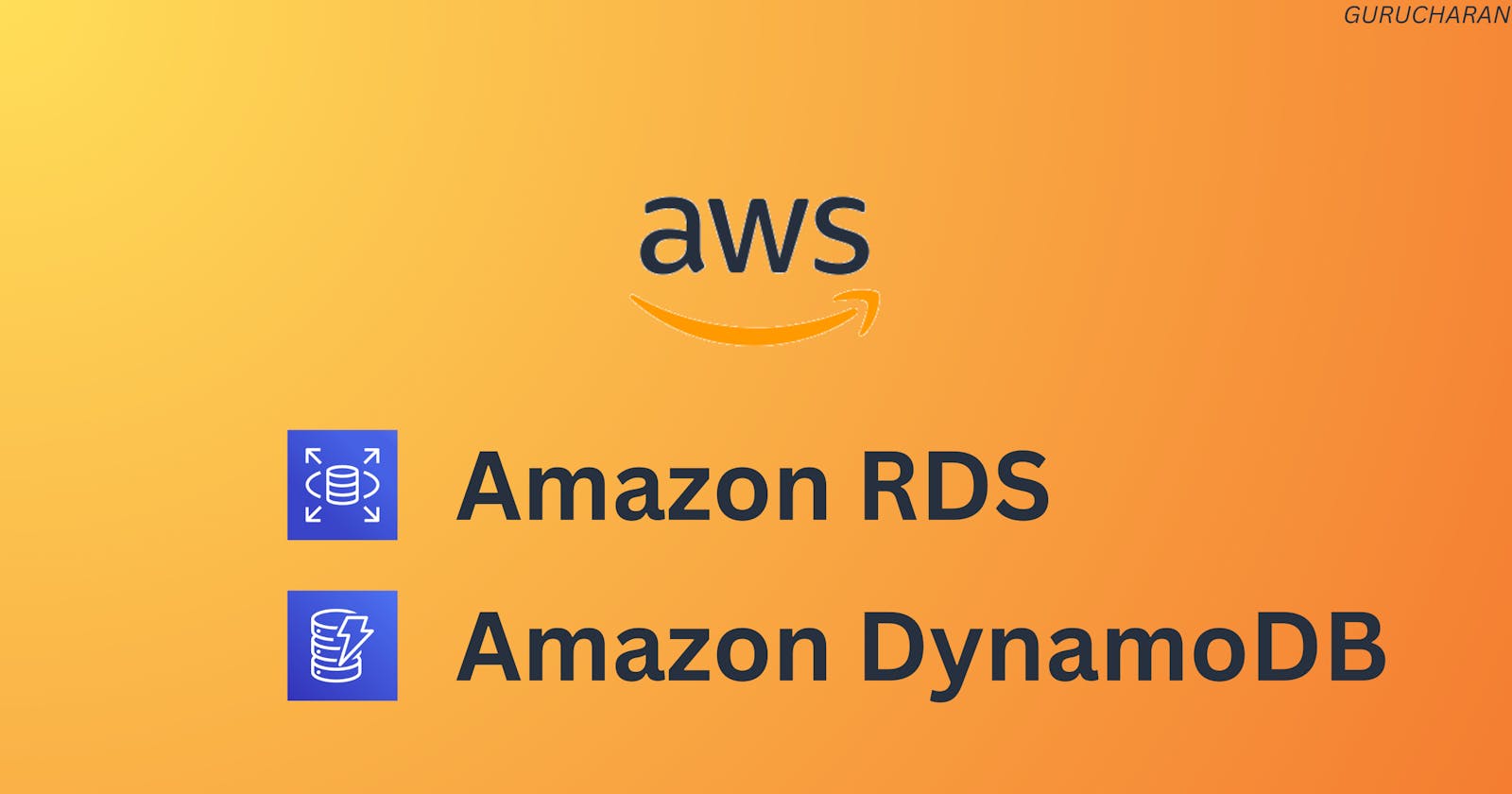Amazon Web Services (AWS) is a cloud computing platform that offers a wide range of services for hosting, storage, and processing of data. Two of the most popular AWS database services are Amazon RDS and Amazon DynamoDB. In this blog, we will discuss the key features, benefits, and differences between these two services.
Amazon RDS
Amazon RDS (Relational Database Service) is a managed database service that enables you to set up, operate, and scale a relational database in the cloud. Amazon RDS supports six popular database engines: Amazon Aurora, PostgreSQL, MySQL, MariaDB, Oracle Database, and Microsoft SQL Server. Amazon RDS automates administrative tasks such as backups, software patching, and hardware scaling. This allows you to focus on your applications rather than the underlying infrastructure.
Key Features of Amazon RDS:
Automated Backups: Amazon RDS automatically performs backups of your database according to your specified retention period. You can also create manual backups and restore them to a point-in-time if needed.
Multi-AZ Deployments: Amazon RDS provides a Multi-AZ (Availability Zone) deployment option that automatically replicates your database to a standby instance in a different Availability Zone. This provides increased availability and durability for your database.
Scalability: Amazon RDS allows you to scale your database resources up or down as needed. You can also choose to scale vertically (increase the size of the instance) or horizontally (add read replicas).
Security: Amazon RDS provides multiple levels of security, including network isolation using Amazon VPC, encryption at rest using AWS KMS, and SSL/TLS encryption for data in transit.
Amazon DynamoDB
Amazon DynamoDB is a fully managed NoSQL database service that delivers high performance at any scale. DynamoDB is designed for applications that require low latency, consistent performance, and scalability. DynamoDB uses a key-value data model with support for document and graph data structures.
Key Features of Amazon DynamoDB:
Fully Managed: Amazon DynamoDB is a fully managed service, which means that AWS takes care of the underlying infrastructure, including scaling, patching, and monitoring.
Fast and Predictable Performance: DynamoDB provides fast and predictable performance, with consistent single-digit millisecond latency for both read and write operations.
Scalability: DynamoDB scales seamlessly from a few requests per second to millions of requests per second. You can also increase or decrease the capacity of your DynamoDB table on the fly.
Flexible Data Model: DynamoDB supports both key-value and document data models, allowing you to store and query structured or semi-structured data.
Key Differences between Amazon RDS and Amazon DynamoDB:
Data Model: Amazon RDS supports relational databases with a structured data model, while DynamoDB uses a NoSQL key-value or document data model.
Performance: DynamoDB provides fast and predictable performance, while the performance of Amazon RDS depends on the database engine you choose and the configuration of your instance.
Scalability: Both Amazon RDS and DynamoDB are scalable, but DynamoDB provides seamless and automatic scaling, while Amazon RDS requires manual scaling.
Cost: Amazon RDS is generally less expensive than DynamoDB, but this depends on the specific use case and configuration.
Conclusion
Amazon RDS and Amazon DynamoDB are both powerful database services that offer different features and benefits. Amazon RDS is a great choice for applications that require a relational database with a structured data model, while DynamoDB is ideal for applications that require fast and predictable performance with a flexible data model. Ultimately, the choice between Amazon RDS and DynamoDB depends on your specific requirements, use case, and budget.
Thank you for reading this blog and if any queries or if any corrections to be done in this blog please let me know.
contact us in Linkedin ,Twitter or email-id gurucharanu716@gmail.com

